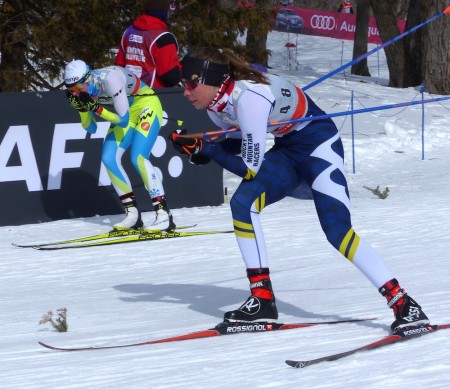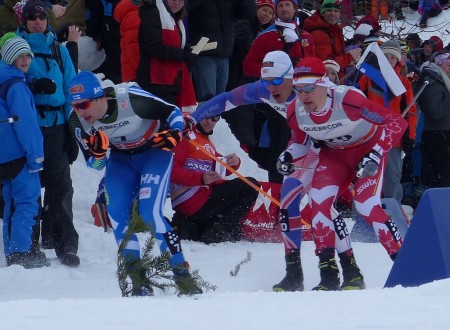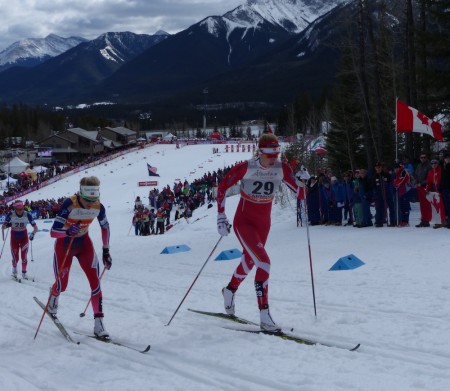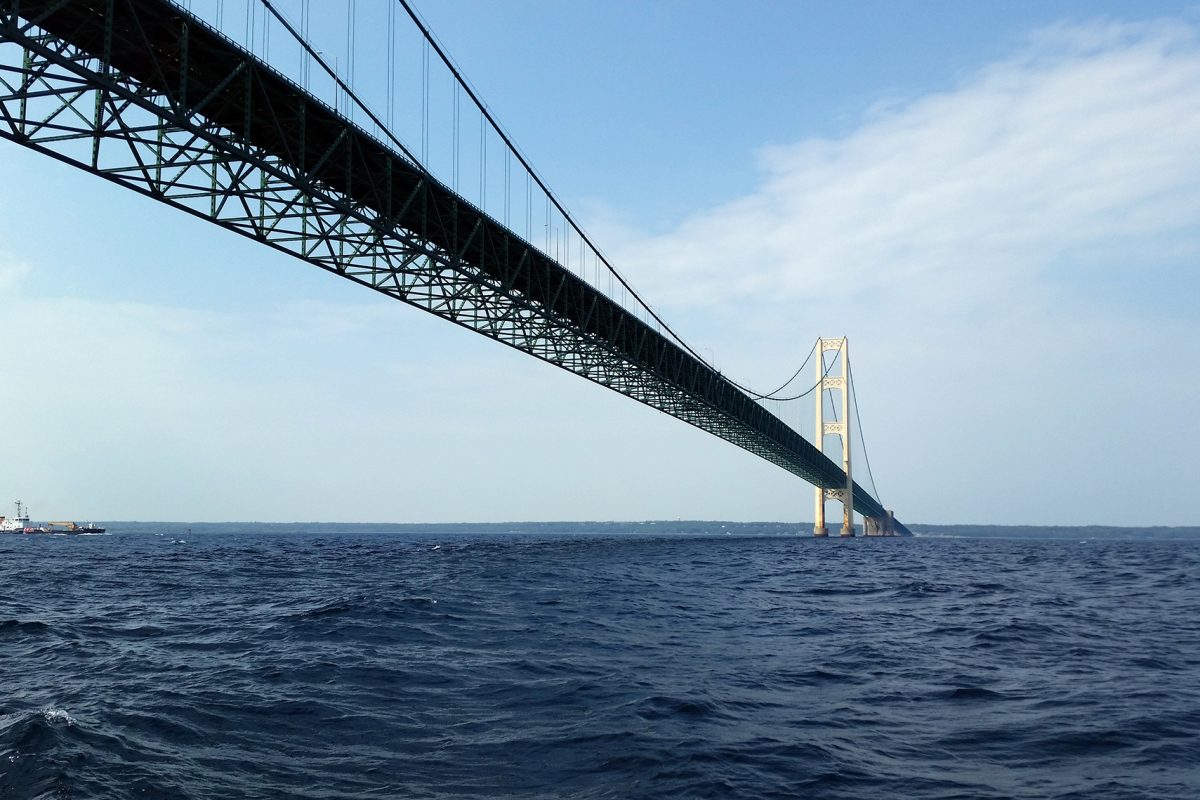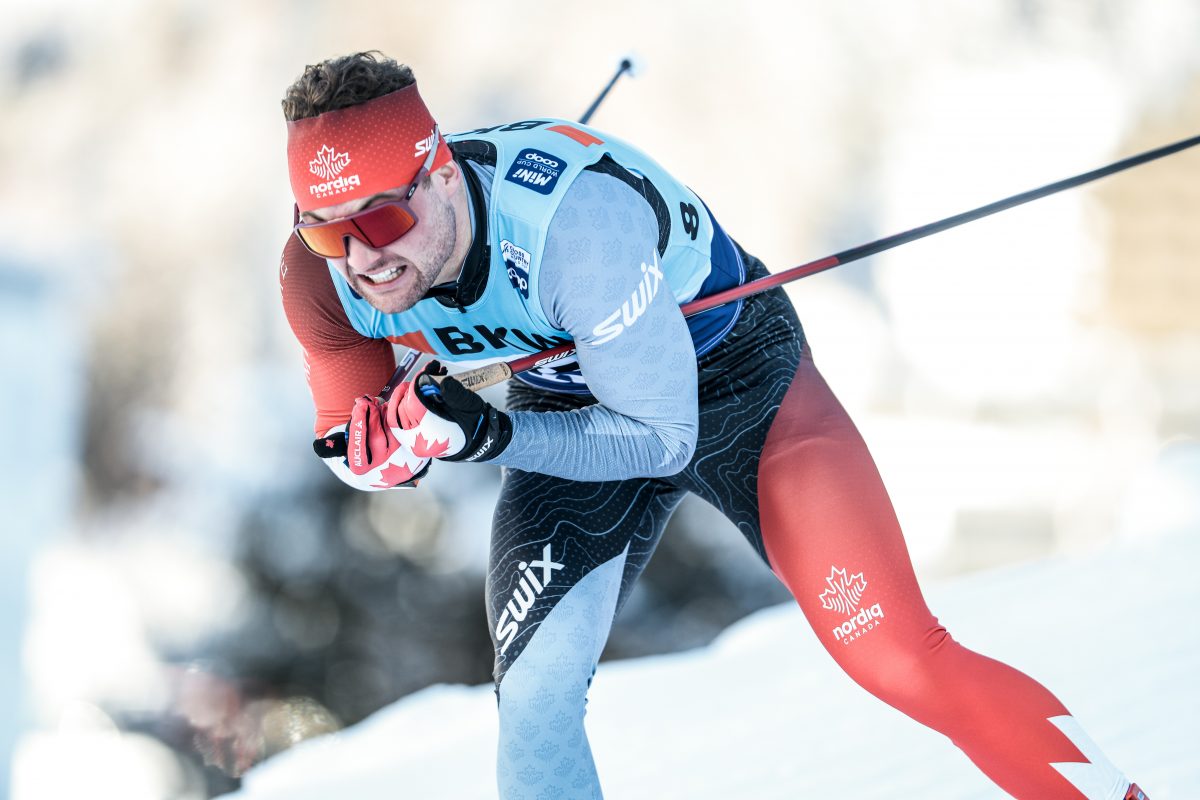
Cross Country Canada (CCC) completed its 2016/2017 World Cup Period 1 selection process last week, choosing its final two athletes after the Frozen Thunder sprint qualifiers (classic and skate). The selection criteria explains how the team is chosen, but doesn’t exactly address the “why’s” of the process.
The selection process changes every year, based on opportunities and goals, and is discussed with the top coaches before being published each spring, CCC High Performance Director Thomas Holland explained.
Better recent results for Canada have increased its quota for the upcoming World Cup season. The men have six starts, plus the Continental Cup (COC) leader. The women have four starts, plus the COC leader (which allows them a total quota of five, but are only sending four women — including the COC leader — to start the season in Europe). The men’s team is ranked fifth, which means it is required to start at least three men for all but one World Cup weekend.
To oversimplify, CCC has four main goals:
- Score World Cup podiums and top 10’s to maintain and grow funding
- Deliver good relay and team sprint results to maintain or grow its World Cup quota
- Build up a competitive team for the 2018 Olympics in PyeongChang, South Korea
- Fill the pipeline with athletes for future success
Of course, individually, there are lots of goals, Holland explained on the phone last week.
“For some people, it’s got to be top 10, our relay team with our men it’s got to be top five, and then there’s other people that’s let’s just get in the points,” he said.
As detailed in the 2016/2017 selection criteria, each World Cup period will be selected differently. Period 2, which includes a three-day mini tour in PyeongChang, has more available quota, as the Canadian World Cup distance skiers will stay in Europe to prepare for World Championships. The selection criteria document says “This is an opportune WC event for sprinters and NextGen athletes.” The selections for later periods will be based on results from Period 1 and Period 2.
The selection process starts with the easy choices. Alex Harvey has consistently been on the podium every year and is in the World Cup Red Group, covering a large chunk of World Cup funding. Devon Kershaw has struggled, by his standards, since ranking second overall in the World Cup at the end of the 2011/2012 season, but is a good bet for top 10’s in both distance and sprint events. Len Valjas has numerous podiums in the past and word has it his test results are back up after his problematic knee surgery three years ago.
Dahria Beatty and Andy Shields are Canada’s Continental Cup leaders, giving them World Cup starts for Period 1 outside the national quota. After this, the choices get harder.
There are three men who recently scored World Cup points. Jess Cockney made the heats three times in his World Cup career, including 10th in Quebec City last season at the Ski Tour Canada (STC). Graeme Killick finished the STC in 27th and posted four top 30’s last season. Knute Johnsgaard got his first top 30 last year in Gatineau.
Killick and Johnsgaard were selected to World Cup Period 1 in the spring, but Cockney was not. According to Holland, it comes down the the relay goal.
“When Ivan [Babikov] left the team and went to coaching,” Holland. “We needed the next man and Knute was the next man for that relay team. That’s it, and it’s that simple.”
All seven of the above “pre-selected” athletes come with funding outside of CCC. The Continental Cup leaders get travel and accommodation support from the race organizers, mandated by FIS. Own The Podium (OTP) funded the other five specifically to achieve top-eight individual results or top-five relay results in Period 1 and 2 as a step towards success in PyeongChang.
OTP is a federal program designed to increase Canada’s medal count at the Olympics. OTP funding is dependent on delivering; CCC had its funding reduced after Sochi and anticipates it will lose more if doesn’t achieve OTP’s target results.
The last two men’s places are used for the development goals. The distance quota will be filled by the preselected skiers, leaving an opportunity for sprinters.
“Qualifiers are always important because if the goal is to be top-30,” Holland explained. “You have to do well in the qualifier.”
Holland explained the decision to use Frozen Thunder to make the final selection, saying “the results show […] that there’s five or six guys here that are reasonably close.”
A side effect of a qualifier-only selection is that the selection committee can see how athletes handle pressure.
“I think the week’s trials showed Canada has some pretty good depth on the sprint side now,” Killick wrote in an email after the races. “I was really impressed how confident Jess was going into these trials and to pull out such a commanding qualifier is exciting for the winter.”
On the women’s side, Canada is on the upside of a rebuilding phase.
“Our women’s team, they’re developing but their best chance of getting nation’s points is in the relay, team sprints, those kinds of things,” Holland said. “But we’re not just going [to Europe] just to do the relay. It’s important [for skiers] like Dahria Beatty, who is more sprint-oriented and got her results there last year, they’re chasing World Cup points, is the primary goal.”
Emily Nishikawa has two World Cup top 30’s and one World Championships top 30. Last season she showed better consistency, including her 37th overall at STC, which makes her an easy selection. Maya Macisaac-Jones scored her first World Cup points in Gatineau last season after a close 31st in Planica, Slovenia. Beatty also scored her first World Cup points last year, in Canmore, but was preselected as the Continental Cup leader. Cendrine Browne, second in the Continental Cup last season, was given the final spot ahead of fellow national U25 Team member Katherine Stewart-Jones and Olivia Bouffard-Nesbitt.
There was a time when CCC was happy to put skiers in the top 30 on the World Cup. In more recent years, a top 30 is seen as a stepping stone to the real goal: top-10 results. For OTP and the funding it represents, top-eight on the World Cup and medals at the Olympics are what count. With this change has come an emphasis on younger skiers. In 2015, the national development team was called the U25 team.
This has led to an effort to get skiers World Cup opportunities at a younger age.
“You do have outliers that take a long time, and there’s others skiers that make the transition quicker,” Holland said. “But it doesn’t happen after 25.”
Holland talked about the evolution of skier development compared to Beckie Scott and Sara Renner’s generation.
“That’s a great thing to go back and look at,” he said. “They [Beckie Scott, Sara Renner, Milaine Theriault, Jaime Fortier, and Amanda Fortier] made a commitment that Nagano wasn’t good enough and they were going to get it done. Four years and they went from top 60 to the top of the podium.”
At Nagano, Scott had the best team result of 51st. At Salt Lake City, Scott uniquely took all three medals in the pursuit and Renner was ninth in the sprint.
“To improve the women’s program in Canada, we need to have women there [in Europe],” Nishikawa, of the World Cup B-team, said on the phone in mid-October.
The only Canadian woman who spent most of last season in Europe, Nishikawa, 27. is looking forward to having female teammates again.
“It will just be nice to have a women’s team there,” she said. “To have enough women to fill a relay team is awesome.”
The push to get athletes World Cup experience at a younger age comes at a cost. The older athletes who often dominate at the NorAm level are seeing less opportunities to move up.
“Crossing over generations is very important,” Holland said. “It is good to have older skiers to kind of set the pace, who have the discipline and can pass that on. It’s a fine balancing act trying to support those people.”
